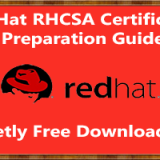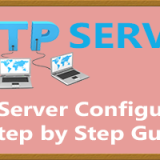This course will cover all aspects of Fedora Server Certification. At the end of the course delegates will have the skills required to administer a Fedora Server. The course will also cover Internet application server configuration on live registered domain name with valid public IP addresses. The training will be given by Senior System Administrator/ Network engineers with several years of industry experience.
Fedora Server
Linux Course Contents
- Introduction to Unix, Installation of Linux
- User, Group Administration, ACL
- Disk Partitions, by using Fdisk
- Mounting File Systems, Swap File System
- Backup and recovery, Tar, cpio
- Basics of NFS, Sharing data
- Disk Quotas, LVM, Raid
- DHCP, DNS, Mail, Web, FTP, YUM
Course Curriculum
Introduction to UNIX & LINUX
- History of Fedora Server
- Basic concepts of Operating System, Kernel, Shell & File System structure
- Basic concepts of Linux
- Differences between CentOS Server & Fedora Server
- Basic commands of Linux
- Advanced Linux Commands
Master DNS Server
- Configuration of DNS server
- Primary DNS server Configuration
- Forward lookup zone Configuration
- Configuration of reverse lookup zone
- Testing tools of DNS zones
- Adding services in DNS
- Installation of Fedora Linux
- Auto Answer Installation using Kick Start
- Network Based Installation (PXE Boot Server)
- Mail Server
- Basics of Mail Servers
- Configuring SMTP service using Postfix
- Configuring POP3 / IMAP service on Fedora Server
Introduction to Graphical Environment
- Use and customize the GNOME interface
- Perform command tasks using the GNOME GUI
- Launch applications from command line & GNOME interface
- Customize X Window System
Linux Web Server
- Basics of Web Service
- Introduction to Apache
- Configuring Apache for main site
- Configuring Apache for multiple sites using IP-based, port-based and name-based virtual hosting
- Software Package Administration
- Installing and deleting software packages using RPM command
- Querying and updating software packages
- FTP Server (vsftp daemon)
- Basics of File Transfer Protocol
- Configuring vsftpd for anonymous ftp service
User and Group Administration
- Creating and deleting users from the systems
- Modifying users profile
- Creating and deleting groups
- Important system files related to user administration
- RAID (Redundant Array of InExpensive Disks) & Logical Volume Manager
- Implementing RAIDon Linux
- RAID levels (0, 1 and 5) configuration using RAID tools
- Resizing the Partition using LVM
- Advanced File Permissions
- Assigning advanced files permissions i.e. chmod, chown, chgrp & Sticky bit
- Creating, modifying and deleting ACL’s
- Web based Administration
- Installing Webmin on Linux
- Administrating Linux machine remotely
- Using Webmin as a tool for configuring various services on Linux
- Disk Partitioning and Mounting File System
- Using fdisk, disk druid utilities for disk partitioning
- Using mkfs, commands to create file systems
- Mounting various file systems
- Auto mounting of file system
- Difference between Unix and Linux Flavors
- Disk Quotas
- Enabling Quotas on partitions
- Creating Quotas for users
- Auditing Quotas limit
- Designing, Implementing & Maintaining of Corporate Network
- Backup and Recovery
- Introduction to various types of backup media
- Backup and restoring using tar and cpio commands
- NFS
- Configuring NFS server
- Mounting NFS exports on NFS clients
- Dynamic Host Configuration Protocol (DHCP)
- Configuring Linux as DHCP Server
- Configuring various clients for DHCP Server (Windows & Linux)
You can also refer this Linux tutorial to Learn this Course completely Free. Official Site






